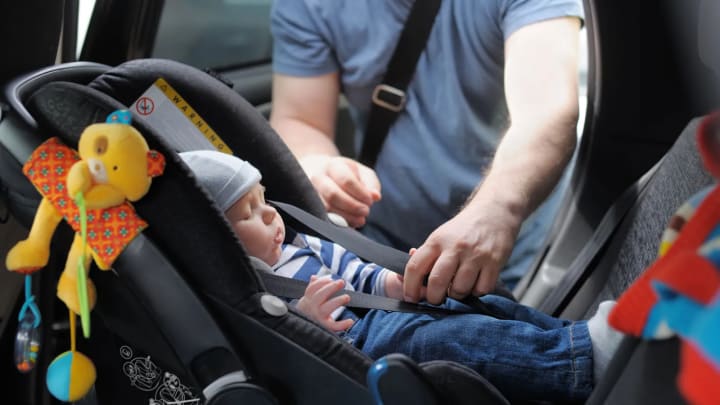The non-linear workdays changing the shape of productivity
Some employees are breaking up their working days into a few hours at a time, doing tasks flexibly and asynchronously in the new world of work.

For decades, the workday has generally meant employees arrived at their office desks at 0900, grabbed a midday lunch, then clocked out at 1700 or 1800, full stop. The pandemic, of course, changed this. Not only have workers been doing their jobs from remote locations for more than two years, but they’ve also changed when, exactly, their work gets done.
This shake-up has given rise to all sorts of new working patterns, including the ‘non-linear workday’. Employees in this arrangement can do their jobs outside the traditional rigid nine-to-five block, often whenever works best for them. While working asynchronously – keeping different hours to colleagues – workers can complete tasks in flexible, focused bursts scattered throughout their day. The idea is employees can craft work schedules around their personal lives, rather than cram life into fixed, contracted hours.
In decades past, non-linear workdays used to be fairly uncommon. Now, however, the mass adoption of hybrid- and remote-working patterns, as well as increasingly flexible schedules, means non-linear workdays are more attainable for larger swaths of the workforce. In some cases, workers are already practising them to an extent without even realising, such as choosing to do focused work late at night or getting ahead on projects in the early morning.
Not every employer will give workers this degree of freedom, of course. But in the new world of work, non-linear workdays are still set to take a more prominent role in some jobs and sectors. According to experts, there are myriad benefits of working asynchronously – as long as certain measures are in place.

Control over how you spend your time
While non-linear workdays appear to be the latest product of the pandemic shake-up of the workplace, they’re not a brand-new concept.
In fact, they’re a throwback to how humans traditionally worked in pre-industrial times, when a typical workday would last from dawn until dusk, interspersed with regular breaks, meals and naps. However, when society industrialised, a rigid, five-day, 40-hour workweek arose in factory settings, explains Aaron De Smet, senior partner at consulting firm McKinsey & Company, based in New Jersey, US.
The eight-hour workday model translated to the office – and even with the arrival of technology, conventional wisdom and societal norms meant fixed, nine-to-five office structures remained in place. De Smet says the pandemic, however, shook loose this traditional thinking, as workers remained productive while taking breaks, spending time with family and working flexible hours.
Non-linear workdays can manifest in many ways. Maybe a worker with flatmates wants to get focused tasks done before everyone else wakes, so she takes on a block of tasks from 0600 to 0800, then shortens her workday at the tail end. Or perhaps a parent takes a couple of hours in the afternoon to pick up his child from school and share a meal, and tacks on the rest of his work time after his daughter goes to sleep. The variations are endless – and highly personal.
Laura Giurge, assistant professor of behavioural science at the London School of Economics and Political Science, says the growing popularity of non-linear workdays stems from workers having become accustomed to flexible working routines through Covid-19. “Asynchronous work allows people to save commuting time, get admin tasks done during low productivity hours, fit in more exercise and save money having home-cooked meals,” she says.
It’s no longer really about effort and time spent, it’s about creating the best outcomes. As the nature of work has shifted, so too has the way workers want to optimise how they do that work – Aaron De Smet
Greater flexibility also generally means greater productivity, too. As opposed to logging on for eight hours straight at a fixed time, employees can break up their workdays into blocks that best suit their natural working rhythms. “A core benefit of non-linear workdays is having control over how to spend your time,” says Giurge, “and getting work done when you’re most productive.”
Non-linear workdays help shift work from being activity focused to being outcomes focused, she adds. “It becomes not about when or where you work, but about getting the work done. Managers become responsible for setting the goals and the vision for employees, but they don’t tell them how to get there.”
De Smet says the non-linear model aligns with the nature of knowledge work – it enables employees to do their jobs when they’re most creative and productive. “It’s no longer really about effort and time spent, it’s about creating the best outcomes,” he says. “As the nature of work has shifted, so too has the way workers want to optimise how they do that work.”
However, for a non-linear model to succeed, he believes some framework generally has to be in place: guideposts that ensure employees don’t stray too far away from a workable schedule. This could take the form of core collaborative hours, in which live, synchronous work can take place, such as meetings or brainstorms.
De Smet thinks it’s these necessary mechanisms that add a layer of complexity to non-linear workdays, meaning some employers have been slow to embrace them. “There is still much knowledge work that needs to be done collaboratively,” he adds. “You can’t let everyone dictate their own schedules unto themselves, or you end up with a free-for-all in which no synchronous work is ever done.”

Looking longer term
Even before the pandemic, many employees were working non-linearly, at least a bit: completing tasks or sending emails outside contracted hours or place of work. However, this was effectively unpaid overtime, carried out on top of time-consuming commutes and nine-to-five in-office schedules.
The hope is that if employers can introduce non-linear workday policies more formally, it’ll redress the balance between asynchronous work and overwork. De Smet says this can help prevent burnout. “It’s finding that perfect mix in the new world of work where the constraints of when, where and how we do our jobs have been loosened: partly through technology, partly through new norms arising from the pandemic,” he says.
Currently, non-linear workdays are mostly being seen in the tech industry: for instance, already relatively flexible start-ups with distributed teams across time zones are more readily able to adopt asynchronous schedules than larger, traditional corporations with a history of in-office working.
However, non-linear workdays could grow in prevalence as a result of job market demand: more workers are looking for greater flexibility and autonomy. In a July 2022 McKinsey study of 13,382 global workers, 40% said workplace flexibility was a top motivator for whether they stayed in a role. “Employees now have diverse working practices and preferences,” says Giurge. “Failing to recognise and appreciate those differences will mean companies lose talent in the long run.”
De Smet says the benefits of non-linear workdays are reciprocal. “For employees, huge workloads no longer mean staying in the office past 1900 and missing their kid’s soccer match. Now, they can have more of a personal life and get their work done. For employers, the work being done is often creative, innovative and emotional – best achieved in flexible, optimised settings.”
In the new world of work, non-linear workdays can also fit seamlessly into hybrid and remote-working patterns. “We’re seeing that the future world of work is increasingly non-linear anyway,” adds De Smet. “We need to find new rhythms that support productivity, efficiency, wellbeing and creativity.”
About the Creator
Dsaachs Kamerad
Suddenly, I found that being able to stay the same is sometimes the rarest kind of happiness.






Comments
There are no comments for this story
Be the first to respond and start the conversation.